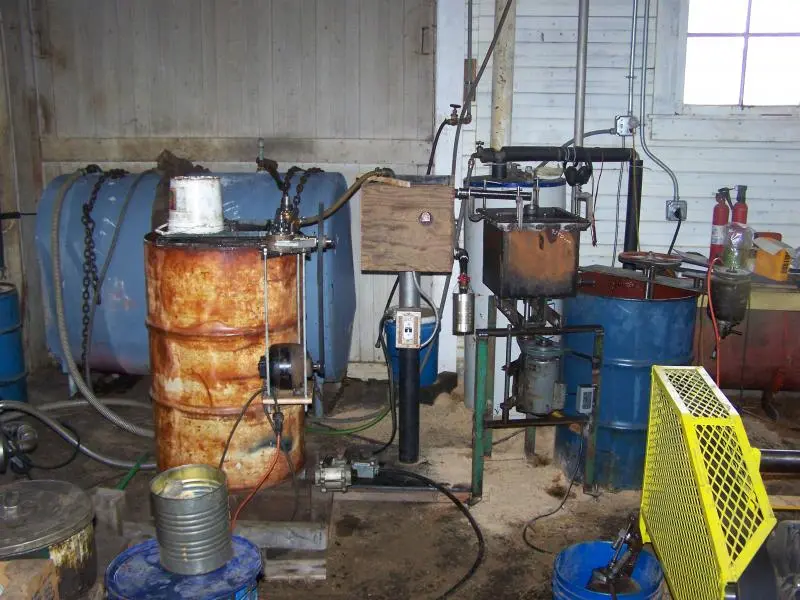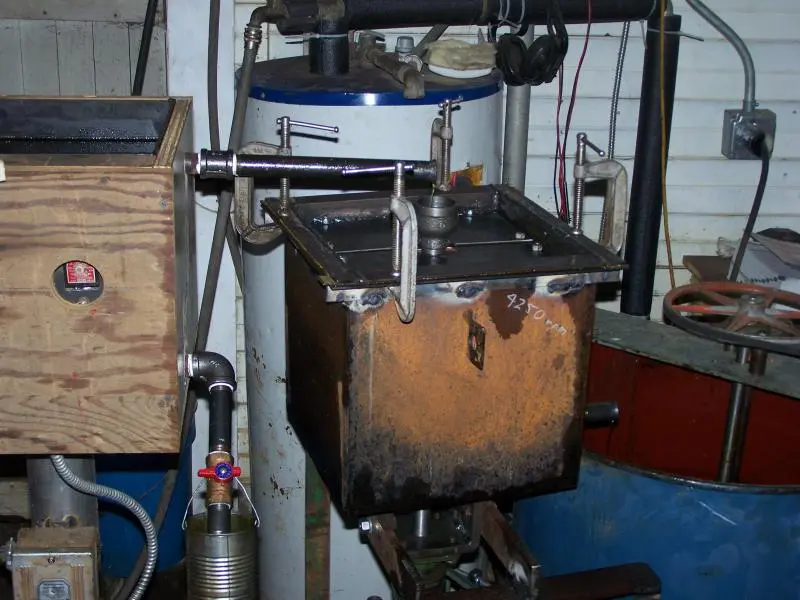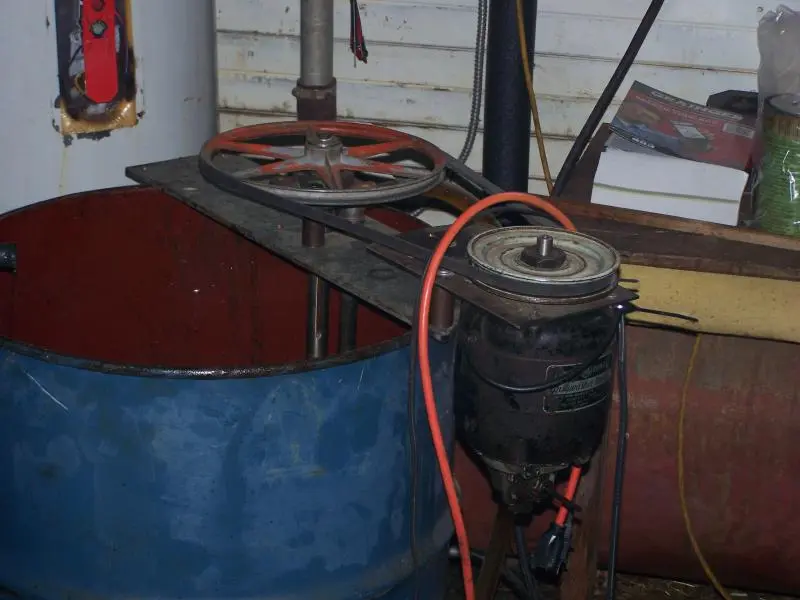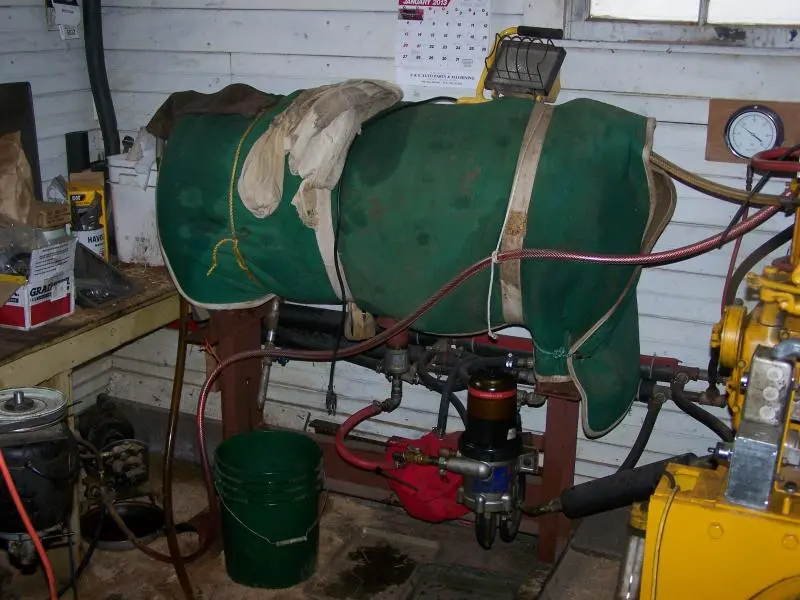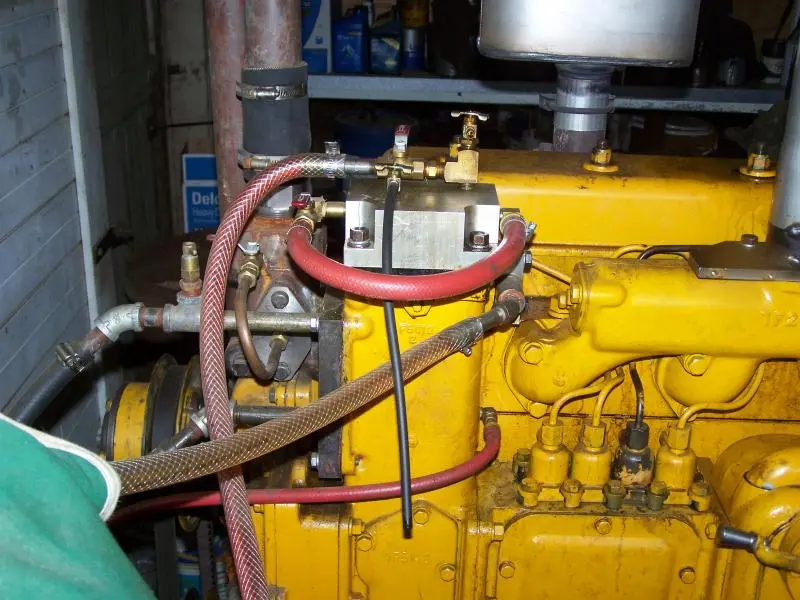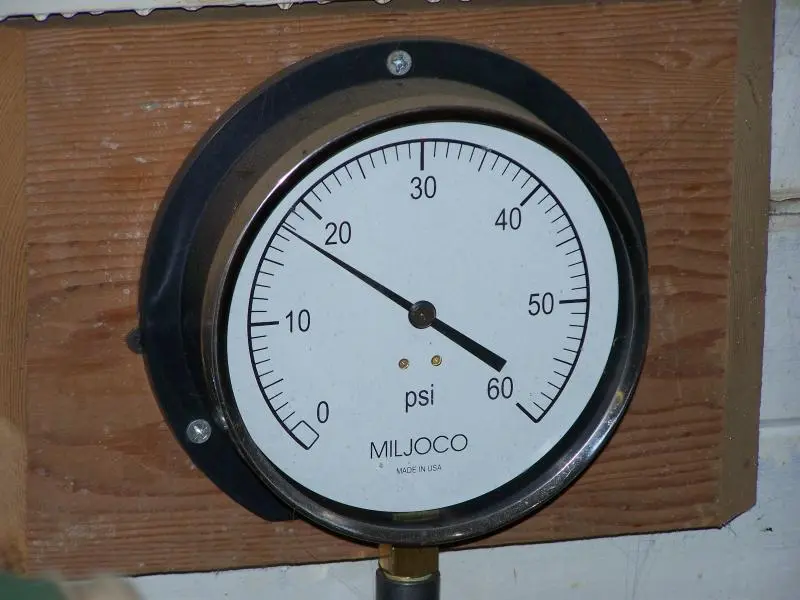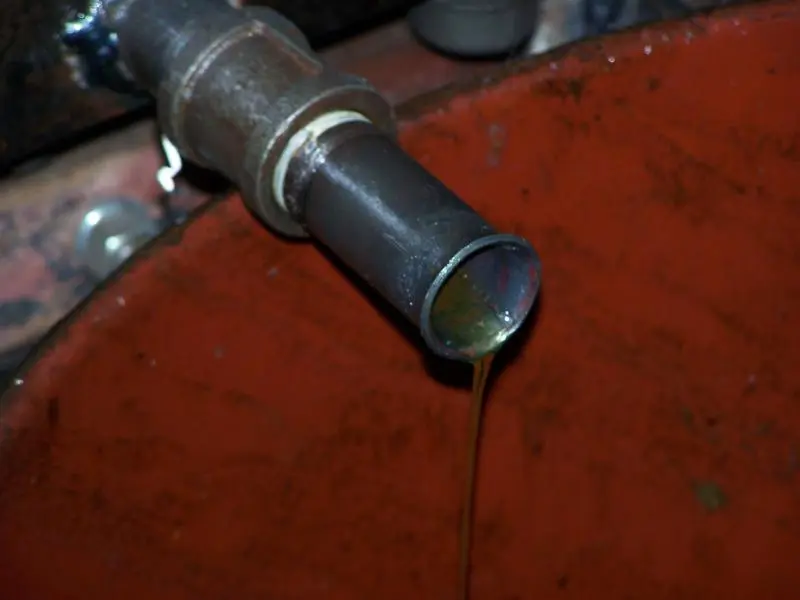I haven't heard of anyone here considering Waste Veg Oil lately, but I expect fuel prices to spike again in the not-so-distant future. So, maybe some operator out there is considering WVO or may at some time.
I found WVO to be an excellent fuel in my D2 5U engine if conditions are allowed for. First, it just will not fire in cold precom cups. It wasn't a big deal when I did this experiment because I crank it at running speed with a 25 HP motor which serves as the generator. I had to crank until diesel reached the injectors to get it warmed up. Second, WVO is a devil to clean. Other than those two problems, the engine ran fine on WVO with no coking of the injectors, as much power as you could expect from diesel and no smoke or foul smell. I like it.
The pics show what I had to resort to to make the WVO usable. First there is the storage tank. I use tanks up to 280 gal so that I can move them to the engine area with my forklift. You got a bigger forklift? You can use bigger tanks. I use a 3 HP centrifugal pump to transfer from storage to the first holding barrel. When it's cold you need it.
The first holding barrel, sort of grey/green color, has a 2" drain valve in the bottom so free water can be drawn off before I work the fuel. Pretty necessary at times. There is a basket screen with about 0.005" openings through which to dump in the fuel. It also has a gear pump hanging over the side that is calibrated at just 4 gal-hour. I use wrecking yard engine oil pumps and make a drive slow enough to get the 4 gph. (Wash machine motor and an old tiller gear box.)
4 gph is delivered to a 1 cu.ft. cooker--steel box, wood jacketed, with water heater calrod in the bottom. Thermostat is set about 190 degrees. It will run between 180 and 210 with 4 gph going through. This evaporates off the suspended water, the milky color. Oil off the top drains into a centrifuge in the next box.
The centrifuge is over driven to about 3800 rpm. I don't know how many G's that produces but it's considerable. Oil trickles in the top, the gunk stays in the bowl and clean oil spins out in a fog, lands in the box and trickles into the final holding barrel, the blue one.
The final holding barrel has another oil pump hanging in it, this one to run fast. I hold the fuel here until there is room in the engine tank, the heated and blanketed horizontal one.
From the engine tank, the fuel goes through a FUEL PRO pre-filter/water trap, then to the engine. It's a dandy filter and a lot easier to service than the ones in the engine, and I've had to service them a lot up to present.
At the engine filter there is a modified filter head that allows the switch between diesel for starting and shutting down, and the WVO for running. (I've posted this picture before.) The diesel comes from yet another tank and is fed past the engine system with a furnace fuel pump and separate filter.
I put a big fuel pressure gauge on the wall so I can see it from across the shop, quite necessary during the development of the system. The last pic is of the output from the centrifuge--4 gal/hour--about twice what the engine uses or about the rate a small dog could pee.
I've been two years at trial-and-error. My wife looked at the stuff I called "tar" and said, "I know what that stuff is. It's starch. Fry cookers are used for french fries and breaded meats and fishes. What you've been dealing with is paste!" I believe she's right. The stuff sure plugged filters in no time at all.
Now the system is on line, working every day, cutting my electric bill and is reliable. Many thanks to all the guys here that helped me put it together. We are THERE!!
